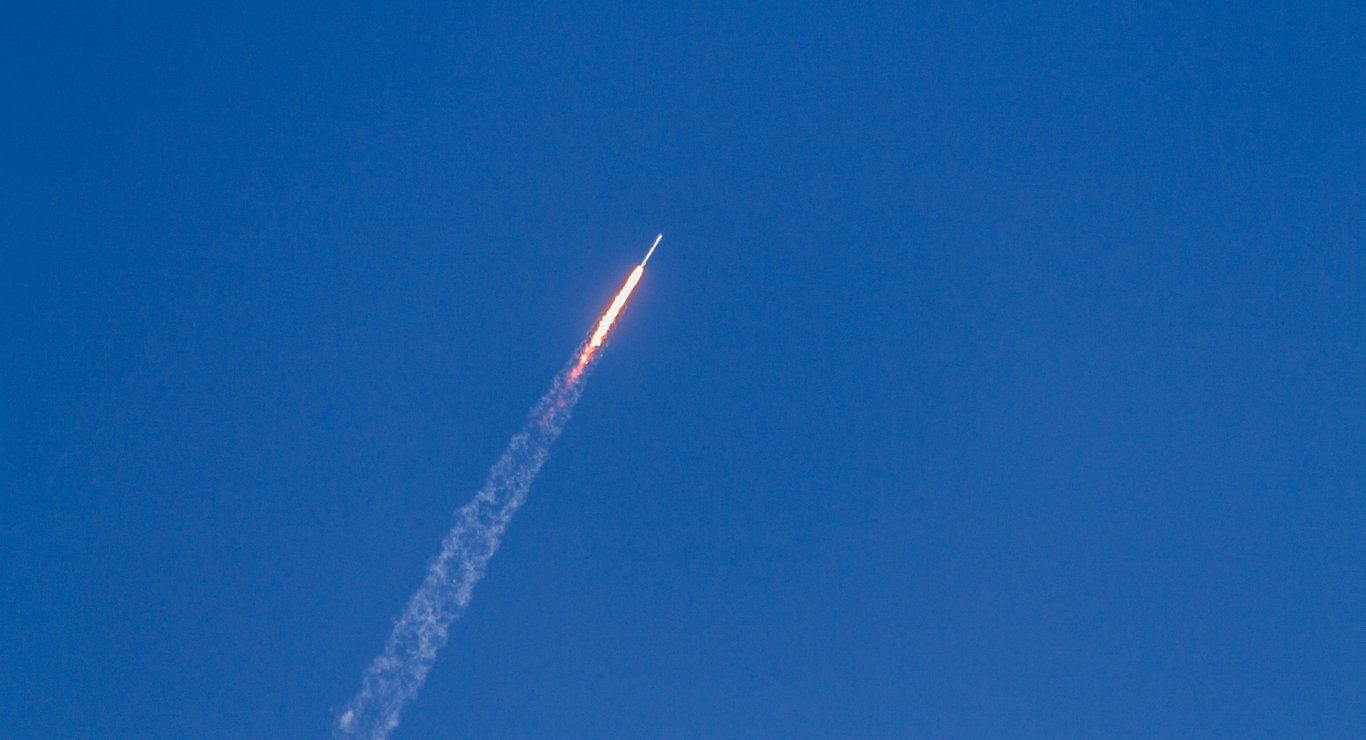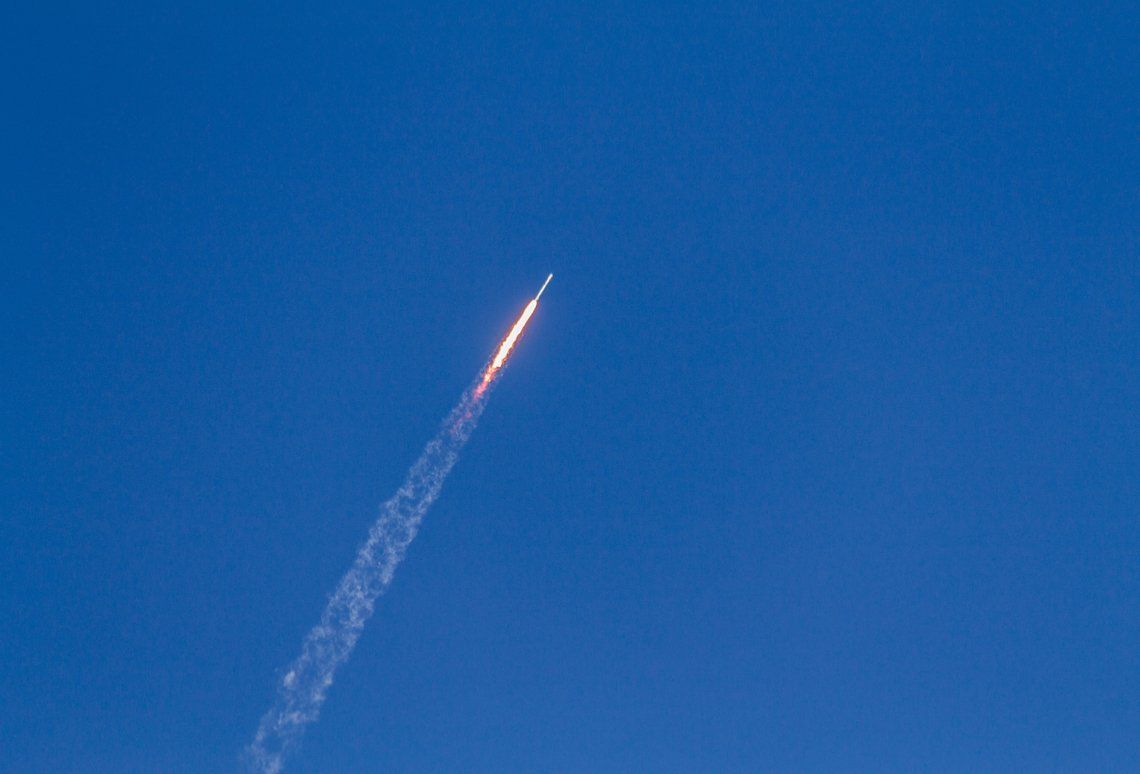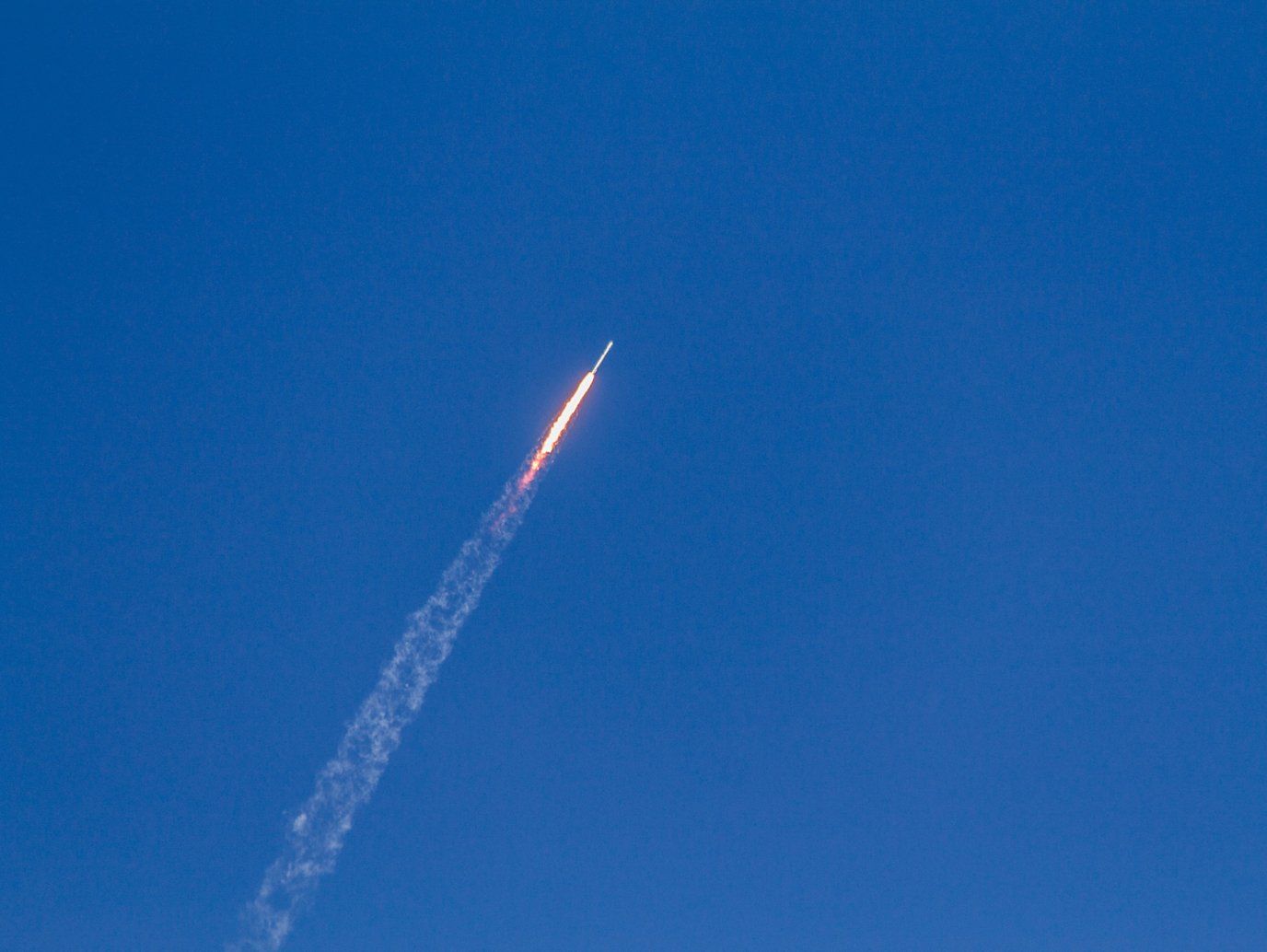18-22 April 2022
Artemis-1 delayed again, but more optimism for private sector

Private rocket launch companies on the rise. (Picture: Unspalsh)
Another very busy week for the space sector. US VP Kamal Harris announced that US will be banning the use of anti-satellite demonstrations, in the hope to set new norms and encourage others to follow suit. How successful could this be in these times? At the same time the US will also be looking to demonstrate their capabilities in “responsive space”, challenging private companies to rapidly launch satellites into orbit in the face of challenges from their rivals. Security in space seems to be of ever-growing importance.
Setbacks for NASA, but Astrobotic & Boeing on course
In the same week, NASA has called off it’s wet dress rehearsal for Artemis-1, and will now look towards a window between 29 June and 12 July, but more setbacks are likely for the long-delayed mission. But perhaps in better news, Astrobotic seem confident about launching their Peregrine lunar lander at the end of 2022, to be launched aboard a ULA Vulcan rocket. This will also see Jeff Bezos gain the upper hand, with Vulcan using two Be-4 engines for the Moon launch, beating off his close rivals at SpaceX.
Similarly, ULA will begin stacking in preparation for Boeing’s Starliner maiden launch, penned in for 19 May.
Another success story for NASA is that of its Ingenuity Mars helicopter as it continues to defy the odds, a year after setting the record for first flight in another world. Ingenuity will now work towards plotting courses for the Perseverance rover.
More contracts for Amazon and SpaceX
After the news last week of Amazon’s new megaconstellation, both the Kuiper contestation and SpaceX, amongst others, have been contracted by NASA to replace their current satellite network. Yet more proof of leadership from the private sector. Furthermore, cloud computing startup Lonestar will look launch their proof of concept data storage unit on the Moon, partnering with Intuitive Machines. They claim this tech will offer a more secure and environmentally friendly alternative to servers on Earth.
The ESA has also reasserted its dedication to lunar missions this week, announcing alternative partners to Russia. They will now work alongside NASA, Jaxa and the Indian space agency on their “Luna” missions. Japan also have announced their intentions to land their Slim probe on the Moon by March next year, as well as two other tiny spacecraft “in and after May”.
Chinese astronauts return after 6 months
In other news, Chinese taikonauts returned to Earth after a staggering 6 months aboard their yet to be completed space station. This represents their longest stay yet. With their station to be completed imminently, China has announced that all are welcome to use the station; could this lure Russia away from cooperation on the ISS.
In the US, the committee of national academies has made recommendations for future deep space exploration, suggesting that exploration of Uranus (amongst other missions) be a priority. Lastly, it’s that man again, Elon Musk. According to reports, he and his investors have formed “X Holdings”, 3 companies established to facilitate his Twitter purchase, and the move could also see him bring all his companies under one umbrella. We will see what his intentions with Twitter might be, and how it may play a part in his long term plans.

Want to keep up to date? Follow ANASDA
This Week
*News articles posted here are not property of ANASDA GmbH and belong to their respected owners. Postings here are external links only.
Our future in space
18-22 April 2022

Private rocket launch companies on the rise. (Picture: Unspalsh)
Artemis-1 Delayed Again, But More Optimism For Private Sector
Another big week for space. Kamal Harris announced that the US is banning the use of anti-satellite tests, in the hope to set new norms and encourage others to follow. At the same time the US will also be looking to demonstrate their capabilities in “responsive space”, challenging private companies to rapidly launch satellites into orbit in the face of challenges from their rivals. Security in space seems to be of ever-growing importance.
Setbacks for NASA, but Astrobotic & Boeing on course
In the same week, NASA has called off it’s wet dress rehearsal for Artemis-1, and will now look towards a window between 29 June and 12 July, but more setbacks are likely for the long-delayed mission. But perhaps in better news, Astrobotic seem confident about launching their Peregrine lunar lander at the end of 2022, to be launched aboard a ULA Vulcan rocket. This will also see Jeff Bezos gain the upper hand, with Vulcan using two Be-4 engines for the Moon launch, beating off his close rivals at SpaceX.
Similarly, ULA will begin stacking in preparation for Boeing’s Starliner maiden launch, penned in for 19 May.
Another success story for NASA is that of its Ingenuity Mars helicopter as it continues to defy the odds, a year after setting the record for first flight in another world. Ingenuity will now work towards plotting courses for the Perseverance rover.
More contracts for Amazon and SpaceX
After the news last week of Amazon’s new megaconstellation, both the Kuiper contestation and SpaceX, amongst others, have been contracted by NASA to replace their current satellite network. Yet more proof of leadership from the private sector. Furthermore, cloud computing startup Lonestar will look launch their proof of concept data storage unit on the Moon, partnering with Intuitive Machines. They claim this tech will offer a more secure and environmentally friendly alternative to servers on Earth.
The ESA has also reasserted its dedication to lunar missions this week, announcing alternative partners to Russia. They will now work alongside NASA, Jaxa and the Indian space agency on their “Luna” missions. Japan also have announced their intentions to land their Slim probe on the Moon by March next year, as well as two other tiny spacecraft “in and after May”.
Chinese astronauts return after 6 months
In other news, Chinese taikonauts returned to Earth after a staggering 6 months aboard their yet to be completed space station. This represents their longest stay yet. With their station to be completed imminently, China has announced that all are welcome to use the station; could this lure Russia away from cooperation on the ISS?
In the US, the committee of national academies has made recommendations for future deep space exploration, suggesting that exploration of Uranus (amongst other missions) be a priority.
Lastly, it’s that man again, Elon Musk. According to reports, he and his investors have formed “X Holdings”, 3 companies established to facilitate his Twitter purchase, and the move could also see him bring all his companies under one umbrella. We will see what his intentions with Twitter might be, and how it may play a part in his long term plans.

22/04/2022
Want to keep up to date? Follow ANASDA
This Week
*News articles posted above are not property of ANASDA GmbH and belong to their respected owners. Postings here are external links only.
18-22 APRIL 2022
Artemis-1 delayed again, but more optimism for private sector

Private rocket launch companies on the rise. (Picture: Unspalsh)
Another very busy week for the space sector. US VP Kamala Harris announced that US will be banning the use of anti-satellite demonstrations, in the hope to set new norms and encourage others to follow suit. How successful could this be in these times? At the same time the US will also be looking to demonstrate their capabilities in “responsive space”, challenging private companies to rapidly launch satellites into orbit in the face of challenges from their rivals. Security in space seems to be of ever-growing importance.
Setbacks for NASA, but Astrobotic & Boeing on course
In the same week, NASA has called off it’s wet dress rehearsal for Artemis-1, and will now look towards a window between 29 June and 12 July, but more setbacks are likely for the long-delayed mission. But perhaps in better news, Astrobotic seem confident about launching their Peregrine lunar lander at the end of 2022, to be launched aboard a ULA Vulcan rocket. This will also see Jeff Bezos gain the upper hand, with Vulcan using two Be-4 engines for the Moon launch, beating off his close rivals at SpaceX.
Similarly, ULA will begin stacking in preparation for Boeing’s Starliner maiden launch, penned in for 19 May.
Another success story for NASA is that of its Ingenuity Mars helicopter as it continues to defy the odds, a year after setting the record for first flight in another world. Ingenuity will now work towards plotting courses for the Perseverance rover.
More contracts for Amazon and SpaceX
After the news last week of Amazon’s new megaconstellation, both the Kuiper contestation and SpaceX, amongst others, have been contracted by NASA to replace their current satellite network. Yet more proof of leadership from the private sector. Furthermore, cloud computing startup Lonestar will look launch their proof of concept data storage unit on the Moon, partnering with Intuitive Machines. They claim this tech will offer a more secure and environmentally friendly alternative to servers on Earth.
The ESA has also reasserted its dedication to lunar missions this week, announcing alternative partners to Russia. They will now work alongside NASA, Jaxa and the Indian space agency on their “Luna” missions. Japan also have announced their intentions to land their Slim probe on the Moon by March next year, as well as two other tiny spacecraft “in and after May”.
Chinese astronauts return after 6 months
In other news, Chinese taikonauts returned to Earth after a staggering 6 months aboard their yet to be completed space station. This represents their longest stay yet. With their station to be completed imminently, China has announced that all are welcome to use the station; could this lure Russia away from cooperation on the ISS? In the US, the committee of national academies has made recommendations for future deep space exploration, suggesting that exploration of Uranus (amongst other missions) be a priority.
Lastly, it’s that man again, Elon Musk. According to reports, he and his investors have formed “X Holdings”, 3 companies established to facilitate his Twitter purchase, and the move could also see him bring all his companies under one umbrella. We will see what his intentions with Twitter might be, and how it may play a part in his long term plans.
Want to keep up to date? Follow ANASDA
This Week
*News articles posted here are not property of ANASDA GmbH and belong to their respected owners. Postings here are external links only.
























































